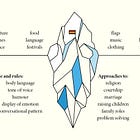Boletín 133 - In school I must not speak Basque (regional languages)
+ key topical takeaways for A Level students about to sit their speaking exam
Decades ago, Lontxo was forced to write "In school I must not speak Basque" 1,000 times in his exercise book. Fast forward to 2025, and Spanish politicians in the national parliament can now submit documents to the Congress of Deputies in regional languages such as Basque, Catalan, or Galician.
👋Welcome to Boletín, an English-language newsletter covering historical, cultural and topical stories related to the A Level Spanish course. These newsletters accompany a student worksheet which can be downloaded freely here. This week:
Edition 133 of Boletín.
Topical takeaways per A Level theme.
PDF downloads.
📌Issue 133
I must admit that I’m flying through this edition. It’s the last day of my half-term and I’ve been working quite a lot (planning and 2nd edition of my book). I was honestly going to leave it a few days but this morning (25th April) I saw a photo (below) shared onto my X feed. It was a photo of a child’s exercise book, dating back (I guess) to the dictatorship years of Spain, in which a child had written "In school I must not speak Basque" 1,000 times. Here it is:
Prior to seeing that image I came across an article about a protest in Barcelona in which a few thousand people got together to voice their anger that the authorities aren’t doing enough in regard to the use of Catalan language in Catalonia.
For my non-UK based readers (and having checked the stats Boletín is now read in 37 states in the US!) I’m an A Level Spanish teacher and this whole newsletter started back in 2019 so that I could share relevant (curriculum-related) stories with the students in my class.
Next week we have an A Level speaking exam, and the topic of Regional Identity and culture is a prominent theme of said exam.
The exam board tend to go for very visible elements of culture and identity when putting together their questions for the speaking tasks and these usually fall into the categories of:
Regional languages
Gastronomy
Festivals
Don’t task this as gospel though. As we’ve explored in the past there are many elements to culture which we don’t see that could also come up. See edition 126 below for a refresher.
An introduction to Spanish grammar (CEFR A1 - B2)
The 2nd edition of my book is 99% complete and should be live next week!
If you like what I’ve been doing with Boletín for the last four five years or like me, you like buying language books then consider checking out the book I released last week. It’s called Spanish grammar workbook: An ambitious, jam-packed introduction to Spanish grammar for complete beginners, intermediate learners and GCSE students. The reviews are currently coming in and I’m delighted with them!
Topical takeaways
Here are some topical takeaways for any A Level students about to do a speaking exam. It’s important that you demonstrate an understanding of culture as appropriate to any points you’re making. Here’s a few snippets linked to the WJEC board. I’ve also posted, for the more diligent of you, some follow up links for you to read through.
Set B card topics (the discussion card):
Family structures, traditional and modern values, friendships/relationships
Since Francoism (1939 - 1975) society has changed a lot. Women, who used to serve a domestic role in a conservative country, now have more rights (117) and according to Giles Tremlett (edition 111) are spearheading a new social revolution.
Other things that women couldn't previously do include: anything related to finances, have a job, open a bank account, possess property, travel without permission. Read more with edition 107.
The average age which a young Spanish person leaves home is 30.3 years old! This is due to several factors such as access to housing, job security/salary, rent prices. This is from edition 131.
Is screen time affecting family relationships? According to edition 65 the family environment and relationships are affected by excessive social media use.
The role of grandparents is fundamental in Spain. They keep families together, transmit family histories, give emotional support, spend time with grandchildren, give advice and look after family members (including financially). This is from edition 63 but in edition 132 James Blick says this is overplayed and aunts/uncles also play an important role.
Educational and employment opportunities
Everything happens in Madrid, or so it seems, according to edition 131. Young people are leaving their pueblos to find opportunities in the bigger Spanish cities. Youth unemployment is at 26.9% which is great compared to 2014 when it was at 56% but still there's improvements to be had.
In edition 100 we learn that one school has decided to teach "domestic chores" to its students such as: ironing, cooking, sewing and cleaning. This is aimed at boys and girls. Also on offer is carpentry, electrician courses, brick-laying courses. The objective is to enlighten students about gender equality.
Los ninis are those who don't work or study and this group has been an issue in Spain for a fairly long time. Some people blame the government for not offering ninis any alternatives. “En España ha habido Gobiernos ‘nini’: no han ofrecido ni alternativas, ni soluciones a los jóvenes” says Yolanda Díaz (Minister of Work).
At the age of 18 in Spain you get what is called the "bono cultural". This is 400 euros, for free, from the government, to spend on cultural activities. Controversially it can be spent on bullfighting events which are protected under Spanish law as being part of Spain's national heritage. This from edition 90.
Spanish youths are some of the most over-qualified in Europe. 35% of youths in Barcelona has jobs which don't have any need for the university education they have. In the same edition, 105, we learn that coding is making its way onto the Spanish curriculum at all levels as the government consider it "the language of the future".
Set A topics (the argument card):
Regional culture and heritage in Spain
What is culture when viewed from the Spanish angle? In edition 126 (you really need to read this one!) we learn that visible culture (the culture we see overtly) is food, language, festivals, flags, music, clothing, fashion, literature and invisible culture (la cultura invisible) is the culture we don't see such as: personal space, display of emotion, touching, approaches to religion, marriage, family roles, attitudes to elders, history, education, death, politics).
A survey has revealed that Spain has the least interest in a return to traditional ways of life/traditional values. These values typically include: the importance of the family, respect for authority, religiousness, good manners.
Important at a local level are bares de barrio, these are places where community life happens. A nice quote is "sin bar, no hay barrio". For lots of people going to the bar de barrio is not only a part of their daily routine but rather a link to their past where they can maintain traditions and family memories.
Social connection is everything, life expectancy is high, there's a strong sense of community in Spain. People are generally more relaxed and open and willing to not work on a Sunday although yes, there are some who do live to work and not the other way round. This is from the James Blick edition (132).
The youth are not as interested in religion as previous generations were. Potentially this is due to the new globalised world we live in or the role of new technologies (edition 68).
The student worksheets can be downloaded here.
Have a great week,
Ollie
❤️










